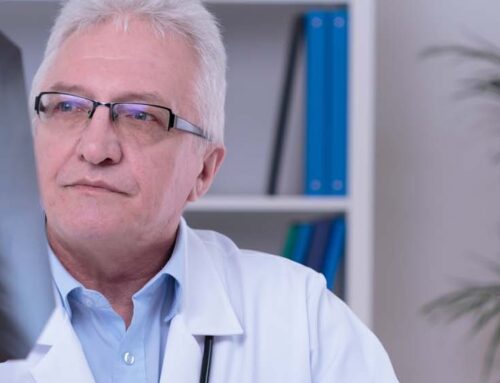 In our most recent blog, Florida Lung, Asthma and Sleep Specialists informed readers about some of the major symptoms of early lung cancer. This week, we bring you signs symptoms of advanced lung cancer.
In our most recent blog, Florida Lung, Asthma and Sleep Specialists informed readers about some of the major symptoms of early lung cancer. This week, we bring you signs symptoms of advanced lung cancer.
They were symptoms that many people ignore as “just part of aging.” We warned our readers to be sure they checked up on these symptoms at their next doctor’s appointment. We alerted you that “shortness of breath,” for example is not typically a normal part of regular aging.
Is Your Body Telling You Something?
Sometimes the amazing human body tries to communicate with your mind, and show you flashes of what is wrong, or what does not feel quite right.
Such are the signs and symptoms of a certain disease. In the medical world, we have seen and categorized such traits as signposts indicating with clarity and specificity, the presence of a certain disease. The signposts are called symptoms and signs.
Lung Cancer’s List of Symptoms for Advanced Stages
At Florida Lung, Asthma and Sleep Specialists, we are aware that Less common signs of lung cancer includesa veritable laundry list of symptoms. In this week’s blog, we will uncover some of the details concerning some of these symptoms.
Some of them seem logical, and others make a patient ask, “Did I really feel that?” or “I am not about to tell my doctor about that. He will think I am crazy!” Sadly, some of the actual “crazy”
symptoms that patients shun to tell their doctor, are the exact ones that need telling!
We say “sadly,” because some of this unique set of symptoms are the same ones that indicate more advanced stages of lung cancer.
1. Tingling of the fingertips—That odd, tingling in fingers, feet and toes can be a symptom of many diseases. However, in the case of lung cancer, this symptom it can be caused by either the disease or the treatment. This symptom is called “peripheral neuropathy.” It can also be indicated by numbness or weakness in hands and fingers.
“Peripheral neuropathy refers more specifically to numbness in the fingers, hands, toes and feet. Although some people in lung cancer treatment never develop this condition, it is a fairly common occurrence.”
Perhaps you would like to know the names of lung cancer chemotherapy drugs that excite this symptom. The list includes “cisplatin, carboplatin, docetaxel (Taxotere), paclitaxel (Taxol), vinorelbine (Navelbine), vincristine (Oncovin), and etoposide (VP-16).”
Basically, the tingle might improve over time, but it could be persistent.
2. Horner’s Syndrome: Of course you won’t call your symptom “Horner’s Syndrome,” but you could describe it to your doctor as a drooping on the eyelid of only one side of your face. Also, this symptom is demonstrated by a smaller-sized pupil in the same eye and a lack of sweat on that same side of the face.
According to Mayo Clinic, this syndrome is indicative of other major conditions. We are familiar with it, for example, as an indicator of a stroke. What it actually indicates is a “disruption of a nerve pathway from the brain to the face and eye on one side of the body.” This could be caused from a tumor initiated by the lung cancer.
3. Bone Pain: This type of pain is most often experienced by patients with small cell cancers, but it can also occur with other types of lung cancer. It is natural to expect that if lung cancer metastasizes to the bone, it can cause the bones to hurt. Most commonly, the pain centers into “the backbone (vertebrae), the large bones of the thigh (the femurs), the pelvic bones, and the ribs.”
New bone formation in the arms and legs might even occur. Such symptoms do not necessarily mean invasion of a certain organ with cancer cells, but rather they are the result of chemical released in the system, by the lung cancer.
4. Paraneoplastic Syndromes: These types of symptoms are called “Paraneoplastic Syndromes.”
They are indirect, but that does not mean they are painless, and they might be alarming when viewed with by loved ones.
5. Clubbing of the Fingers: In addition to bone pain, another Paraneoplastic Syndrome is “Clubbing of the Fingers.” This is caused when the body deposits extra tissue around the tips of the fingers, making them misshapen. The clubbed fingers sometimes appear like rounded lollypops.” However, remember, “This is not specific to lung cancer and can happen in many lung diseases.”
The swelling is so gradual that some patients do not even perceive the lollypop shape, although concerned observers definitely do.
6. Problems with Balance: In addition to exhausting, lung cancer patients often exhibit problems with their balance or their stride when they try to walk.
Caregivers are often cautioned to place extra chairs in the environment for frequent rest stops when the patient is walking to the bathroom or kitchen.
7. Lymph Nodes: Many lung cancer patients find swelling in the lymph nodes of their neck and chest. However, a more unusual, generalized swelling of the face and neck area can also be seen as a symptom of lung cancer.
Once a patient has been diagnosed with lung cancer, the list of possible symptoms in the later stages seems endless.
Difficulty swallowing can be one. Another patient can complain of blurry vision

Signposts of Hope: In spite of symptoms. we treat patients like family at FLASS, the home of compassionate care.
Yet another will experience extreme headaches.
The collection of symptoms often depends on where the lung cancer metastasizes. Quite commonly, lung cancer travels from the lungs to the liver, to the blood, and finally to the brain.
As noted at the beginning of this article, these are the signs of advanced lung cancer, but remember, even metastatic or widespread lung cancer can benefit from treatment.
The most important message Florida Lung, Asthma and Sleep Specialists communicate is that if you have these symptoms, you should visit your doctor for immediate testing and diagnosis.
Even with such symptoms, life can be extended, and treatment can help patients attain a higher quality of life even in the last stages of the disease.
Hope Rises with the New, Targeted Lung Cancer Therapies
There are new therapeutic treatments being researched and tried. For example, one therapy is designed to prevent or halt lung cancer cells from growth by targeting the new blood vessels they need.
Another one is designed to target the growth cycle of cancer cells by medical interference in the chemical signals cancer cells need.






